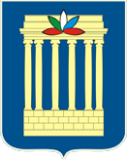THE 25TH ANNIVERSARY OF THE ADOPTION OF THE CONSTITUTION OF THE RUSSIAN FEDERATION
Soviet Constitutions were adopted, as a rule, in the midst of crucial political events. They marked the transition from one stage of political history to another. The first Constitution in the history of Russia was adopted in 1918, when the new government represented by Soviets of Workers’, Soldiers’ and Peasants’ Deputies were eager to destroy the old world and sweep it completely away. The 1924 Constitution of the USSR was adopted after the formation of the Soviet Union. The 1936 Constitution or the Stalin Constitution proclaimed a new post-revolutionary era of socialism. The 1977 Constitution, or the Brezhnev Constitution, reflected the formation of the Soviet system in its most mature form.
At the end of the twentieth century, Russia had to create a fundamentally new Basic Law, since it was impossible to fit new socio-political and economic realities into the Brezhnev constitution written for a completely different state.
The Russian Constitution adopted after the tragic events of October 1993 marked a new historical era of the Russian state. It helped overcome the ambiguity of halfhearted political reforms of the late 80s and the early 90s aimed at forming a full-fledged legislative power. On its basis, it became possible to restore social stability, to establish a dialogue between various often conflicting political forces of the state. In addition, it approved the essential principle of modern parliamentarism – the principle of separation of powers.
The new Russian constitution combined two basic priorities, the highest status of rights and freedoms of citizens and a strong state, emphasizing their mutual duty to respect and protect each other. It facilitated consolidation of fundamental values, such as democracy, federalism, the social orientation of the state, freedom of economic activity, respect for cultures and traditions of all nationalities that make up the multinational people of the Russian Federation.
Those who want to learn more about the history of constitutional law in Russia can find information on the board ‘Historical Review’ of the Department of Humanities, as well as at the literature exhibition in the reading room (room 306/3) of the library.
